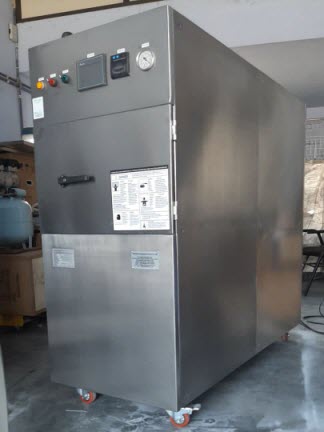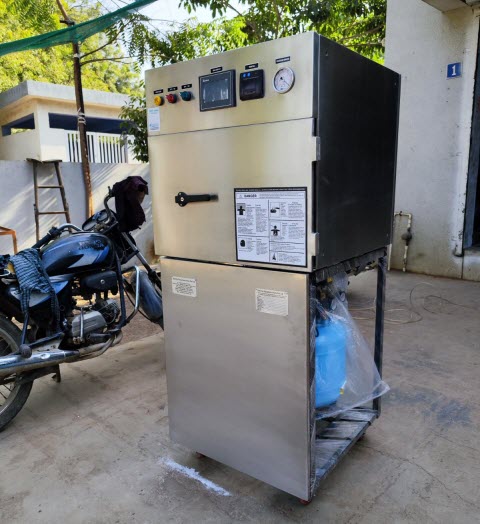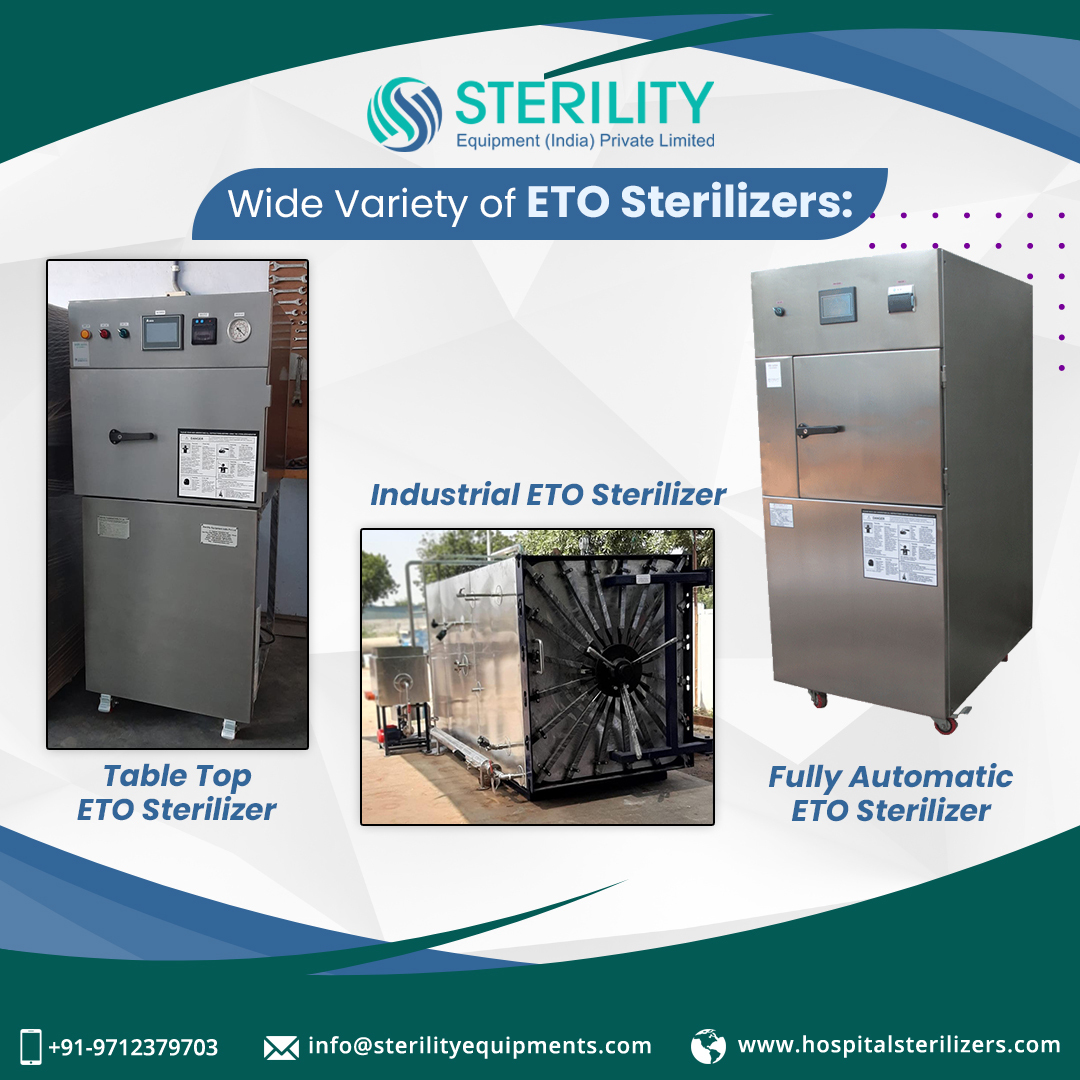In today’s world, where environmental conservation is a top priority, businesses are increasingly recognizing the significance of sustainable sterilization practices. The use of eco-friendly sterilizer equipment has emerged as a crucial aspect of reducing the carbon footprint and fostering a greener future. By implementing these practices, companies not only contribute to environmental conservation but also align themselves with the growing sustainability movement.
The adoption of sustainable sterilization practices is driven by the need to minimize the negative impact of traditional sterilization methods on the environment. Traditional practices often involve the use of chemicals, excessive energy consumption, and the generation of significant waste. In contrast, sustainable sterilization practices prioritize the efficient use of resources, reduce emissions, and focus on eco-friendly alternatives.
By investing in eco-friendly sterilizer equipment, businesses can actively reduce their carbon footprint. These advanced sterilization technologies incorporate energy-efficient processes, minimizing the consumption of resources and lowering greenhouse gas emissions. Such equipment often utilizes innovative features like low-energy modes, optimized operational processes, and intelligent controls to achieve maximum efficiency.
The positive impact of sustainable sterilization practices extends beyond reducing carbon emissions. By embracing eco-friendly sterilizer equipment, businesses also contribute to a range of environmental benefits. For instance, these practices can help conserve water by utilizing water-saving mechanisms and recycling systems. Additionally, eco-friendly sterilizer equipment often incorporates environmentally friendly materials and avoids the use of harmful substances, further minimizing the ecological impact.
Benefits of Eco-Friendly Sterilizer Equipment
Investing in eco-friendly sterilizer equipment presents numerous advantages, benefiting both businesses and the environment. These cutting-edge sterilization technologies incorporate energy-efficient processes that not only reduce resource consumption but also minimize harmful emissions. By embracing eco-friendly sterilizer equipment, companies can enhance their sustainability efforts, improve operational efficiency, and contribute to a healthier environment for everyone involved.
One of the primary benefits of eco-friendly sterilizer equipment is its positive impact on the environment. By utilizing energy-efficient processes, these sterilizers significantly reduce energy consumption and subsequently lower greenhouse gas emissions. This reduction in carbon footprint helps combat climate change and contributes to a more sustainable future.
Moreover, eco-friendly sterilizer equipment promotes resource conservation. These advanced technologies optimize the use of water, electricity, and other resources, minimizing waste and ensuring efficient utilization. By reducing resource consumption, businesses not only contribute to environmental preservation but also save on operational costs in the long run.
In addition to environmental benefits, investing in eco-friendly sterilizer equipment can enhance a company’s sustainability efforts. Embracing these technologies demonstrates a commitment to responsible business practices and positions the company as an environmentally conscious organization. Such initiatives are highly valued by consumers and can attract a broader customer base, especially those who prioritize sustainability in their purchasing decisions.
Another significant advantage of eco-friendly sterilizer equipment is improved operational efficiency. These advanced sterilization technologies often feature automated processes, intelligent controls, and optimized workflows. By streamlining sterilization procedures, companies can increase productivity, reduce downtime, and enhance overall operational effectiveness. This leads to cost savings, higher throughput, and improved customer satisfaction.

How Sterilizer Equipment Contributes to Environmental Conservation?
Sterilizer equipment is a vital component in the journey towards environmental conservation, enabling businesses to adopt sustainable practices across various industries. These devices are designed with innovative features that prioritize eco-friendliness, including low-energy consumption, water-saving mechanisms, and the use of environmentally friendly materials. By utilizing sterilizer equipment, businesses can minimize waste, conserve resources, and significantly reduce the overall environmental impact associated with sterilization processes.
One of the primary ways sterilizer equipment contributes to environmental conservation is through its low-energy consumption. Advanced sterilization technologies are engineered to operate efficiently, minimizing energy usage during the sterilization process. By reducing energy consumption, businesses can decrease their carbon footprint and contribute to the global efforts of mitigating climate change. This energy efficiency not only benefits the environment but also leads to cost savings for businesses, making it a win-win situation.
In addition to energy conservation, sterilizer equipment incorporates water-saving mechanisms to promote sustainable water usage. Water is a precious resource, and traditional sterilization methods often involve significant water consumption. However, modern sterilizer equipment is designed to optimize water usage, employing innovative technologies such as recycling systems and precise water delivery methods. By reducing water wastage, businesses can contribute to water conservation efforts and alleviate the strain on freshwater sources.
Furthermore, sterilizer equipment prioritizes the use of environmentally friendly materials, reducing the environmental impact associated with sterilization processes. These devices are constructed with materials that are non-toxic, recyclable, and have a minimal ecological footprint. By opting for equipment made from environmentally friendly materials, businesses can minimize their contribution to pollution, waste generation, and resource depletion.
Another way sterilizer equipment contributes to environmental conservation is by minimizing waste generation. Traditional sterilization methods often produce significant amounts of waste, including packaging materials, single-use supplies, and chemical by-products. However, modern sterilizer equipment incorporates innovative features that reduce waste generation. For instance, some sterilizers utilize reusable sterilization trays or pouches, eliminating the need for disposable packaging. By minimizing waste, businesses can reduce their environmental impact and promote a circular economy.
Moreover, sterilizer equipment enables businesses to adopt more sustainable sterilization practices, such as the use of alternative sterilization methods. For example, some sterilizers utilize low-temperature steam or hydrogen peroxide gas instead of harsh chemicals, reducing the release of harmful substances into the environment. These alternative methods not only ensure effective sterilization but also contribute to a healthier and safer working environment for employees.

Achieving Energy Efficiency with Sterilizer Equipment
Energy efficiency is a fundamental aspect of sustainable sterilization practices, and businesses can achieve this by utilizing sterilizer equipment designed with a focus on energy conservation. These advanced sterilizers prioritize energy efficiency, allowing businesses to reduce their energy consumption and lower their carbon emissions. By incorporating cutting-edge technologies and optimizing operational processes, energy-efficient sterilizer equipment maximizes energy conservation while upholding the highest standards of sterilization effectiveness. Embracing these energy-efficient sterilizer solutions benefits the environment and offers long-term cost savings for businesses.
One of the primary advantages of energy-efficient sterilizer equipment is the significant reduction in energy consumption. These devices are engineered with innovative features that minimize energy usage without compromising on sterilization performance. By optimizing the sterilization process, incorporating intelligent controls, and utilizing energy-saving modes, these sterilizers achieve exceptional energy efficiency. This reduction in energy consumption directly translates to lower carbon emissions, contributing to environmental preservation and combating climate change.
In addition to environmental benefits, energy-efficient sterilizer equipment offers substantial cost savings for businesses. By reducing energy consumption, companies can lower their utility bills and operational expenses. Over time, the cost savings from reduced energy consumption can be significant, providing businesses with a competitive edge and enhancing their financial sustainability. Embracing energy-efficient sterilizer equipment allows businesses to allocate their resources more efficiently and invest in other areas of growth and development.
Cutting-edge technologies incorporated into energy-efficient sterilizer equipment play a crucial role in achieving optimal energy conservation. These technologies include advanced insulation materials, intelligent sensors, and precise temperature control mechanisms. The integration of these features ensures that the sterilization process operates at maximum efficiency, reducing energy wastage and minimizing heat loss. By optimizing energy usage, businesses can achieve the desired sterilization outcomes while consuming fewer resources.
Optimized operational processes also contribute to energy efficiency in sterilizer equipment. These processes involve streamlining workflows, reducing idle time, and implementing efficient sterilization cycles. By optimizing the sequence of operations, businesses can minimize energy consumption and increase throughput. Additionally, employing intelligent controls and automation enables precise control over energy usage, ensuring that energy is only utilized when necessary. This level of operational efficiency not only conserves energy but also enhances overall productivity and reduces sterilization cycle times.
Environmental Certifications and Compliance
In the pursuit of environmental conservation, businesses can ensure their sterilization practices align with sustainability goals by selecting equipment with appropriate certifications and compliance standards. Certifications such as ISO, RoHS (Restriction of Hazardous Substances), and EPEAT (Electronic Product Environmental Assessment Tool) provide assurance that the sterilizer equipment adheres to stringent environmental criteria. By choosing certified equipment, companies can demonstrate their commitment to sustainability, gain customer trust, and proactively meet regulatory requirements.
ISO is an internationally recognized environmental management standard. Sterilizer equipment certified under ISO meets rigorous environmental performance criteria, demonstrating that the manufacturer has implemented robust environmental management systems. This certification ensures that the equipment complies with established environmental standards, including waste reduction, resource conservation, and emissions control. By selecting ISO certified sterilizer equipment, businesses showcase their dedication to environmentally responsible practices and gain credibility among environmentally conscious stakeholders.
RoHS is another important certification to consider when choosing sterilizer equipment. It restricts the use of hazardous substances in electrical and electronic equipment, reducing the environmental impact of these devices. RoHS compliance ensures that the sterilizer equipment is free from hazardous substances such as lead, mercury, cadmium, and certain flame retardants. By selecting RoHS-compliant equipment, businesses contribute to the reduction of hazardous waste, protect human health, and minimize environmental contamination.
EPEAT certification focuses specifically on the environmental performance of electronic products. Sterilizer equipment with EPEAT certification undergoes a comprehensive evaluation, considering factors such as energy efficiency, material selection, product longevity, and end-of-life management. EPEAT-certified equipment ensures that the manufacturer has implemented sustainable practices throughout the product’s lifecycle. By choosing sterilizer equipment with EPEAT certification, businesses can align with responsible electronic waste management, conserve resources, and reduce their overall environmental footprint.
In addition to the specific certifications mentioned above, businesses should also be mindful of other relevant industry-specific certifications and compliance standards. These may vary depending on the sector and geographical location. It is essential to research and identify certifications that are specific to sterilization equipment in the relevant industry. By meeting industry-specific standards, businesses can demonstrate their commitment to environmental conservation and ensure that their sterilization practices align with sector-specific best practices.






